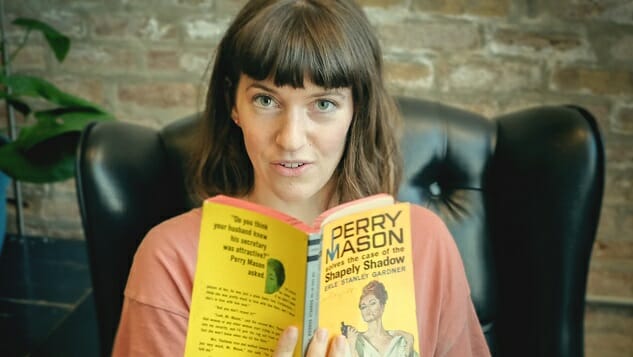What Women Can Learn From Woman Serial Killers: Tori Telfer on Her Book Lady Killers
Photo by Marcy Capron Vermillion | Drawing by Dame Darcy
Last fall Tori Telfer released the book Lady Killers: Deadly Women Throughout History via HarperCollins. It’s a book about women who just happen to also be serial killers. Why female serial killers? Because women aren’t taken seriously, and perhaps there is no better example than in the mass killing genre.
“Elizabeth Wettlaufer of Canada killed 14 people last year,” Telfer tells Paste. “She tried to confess to the crimes multiple times by coming forward and telling people that she was a serial killer who needed to be stopped. The people she confessed to laughed her off. Who could believe such a thing—a lady serial murderer? How hilarious. So she just kept killing until someone took her seriously.”
Well, that’s bleak.
Telfer isn’t one for blood or gore. As a Chicago writer she’s carved a niche in much more classic literary pursuits, but the opportunity to pitch a historical column at The Awl arose, and on a whim she suggested female serial killers. “Columns are cool,” she says. “As are Wikipedia deep dives.” While the bloodspray wasn’t a draw, Telfer was all in for weirdos and people “deranged in hilarious ways.” She’s maintained a long-standing fascination with Roman emperor Nero. “He was once bored at a gladiator match and so he threw a brick at someone in the crowd to kill them. If you don’t think that’s funny, you probably won’t agree with my sense of humor.”
Telfer’s entry point here is darkly comic. She doesn’t have some deranged, murder-based origin story. “I’m not looking for justice against a criminal, but that doesn’t stop people from sharing stories with me,” Telfer says. “At a book reading recently, a girl told me her step-grandmother lost three husbands to ‘heart attacks’ and then some children and their spouses and then the step-grandmother got all the money. Look, people just don’t die that way and in that frequency with a pattern of causes without a serial killer present.”
Her initial draw here was Elizabeth Báthory, the Hungarian noblewoman who may have tortured and killed upwards of 1600 young women. Unfortunately, there was no sense of kinship in that original case-file. Telfer says: “She was just too bad. Not for me.”
But then came Tillie Klimek. “She was the first with this relatable, what I’d call ‘funny’ edge. Her lover wound up dead when he wouldn’t propose to her. And then her husbands passed and she was super blase about the whole thing. She’s this grumpy woman going around Chicago poisoning people she doesn’t like, including neighbors and loud pets. I’m not saying I get where she was coming from, but compare that to Jeffrey Dahmer who was trying to turn corpses into love zombies.” Telfer doesn’t necessarily agree with all the killers she profiled, but for many of these women she absolutely understands the line of logic. And sometimes the sense of humor.
“It’s not gory necrophilia slasher overkill stuff. There are a few straight-up sociopaths, of course, but there are others where between the culture and their background you can absolutely get what led them to do it,” she says. Folks killing in a vacuum are easy to understand, especially between cultures and personal backgrounds. There are a few genuine enigmas, especially in the female serial killer game, but it is still impossible to apply a neat equation.
“Women don’t go… full Bezerker mode? It’s mostly that,” Telfer says. “The undead clown zombie stuff is what makes us balk at serial killers.”

Kate Bender (Drawing by Dame Darcy, from Lady Killers: Deadly Women Throughout History)
So how do we take female serial killers seriously? “You have to see them as human,” Telfer says, “and I don’t mean treasure them as human beings but understand that a fellow person is capable of this and what may bring them to that point. Old journalists would talk about these women as if they were unholy demons or, to quote one directly, ‘beasts from the depth’ which is to laugh them off. They’re unhinged or act in extreme ways but they are still governed by their own agency and systems. The reactions to circumstances makes them human and female serial killers keep getting dismissed.” Telfer refers back to the Canadian woman who kept trying to confess to her crimes last year. “Don’t laugh at women.”
- Curated Home Page Articles By Test Admin October 21, 2025 | 3:10pm
-

- Curated Home Page Articles By Test Admin October 21, 2025 | 2:57pm
- Urls By Test Admin October 21, 2025 | 2:57pm
- Curated Home Page Articles By Test Admin October 21, 2025 | 2:55pm
-

-

-

-

-

-

-

-

-

-

-

-

-

-

-

-

-

-

-

-

-

-

-

-

-

-

-

-

-

-

-

-

-

-

-




































